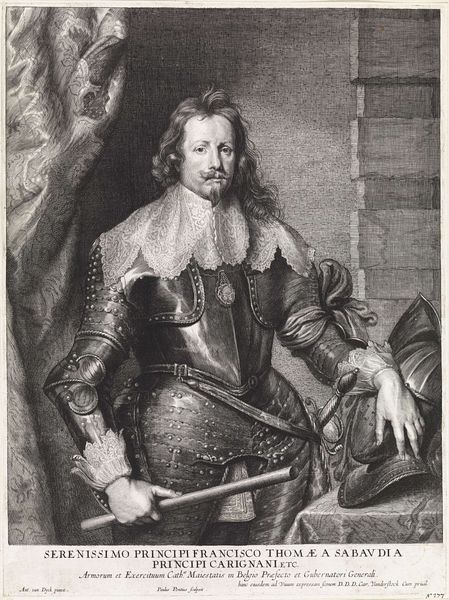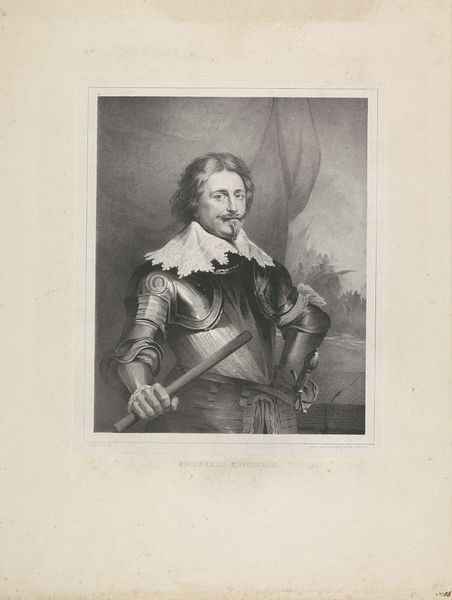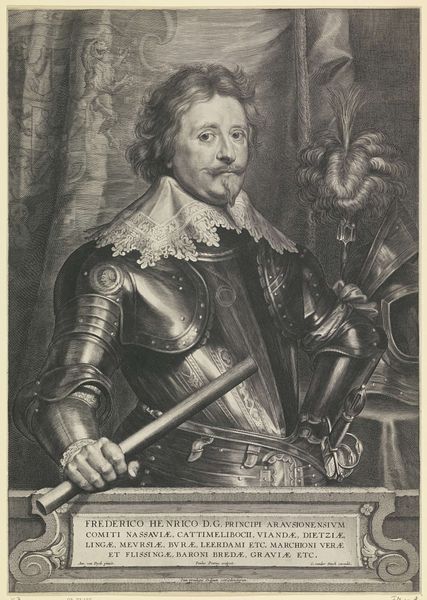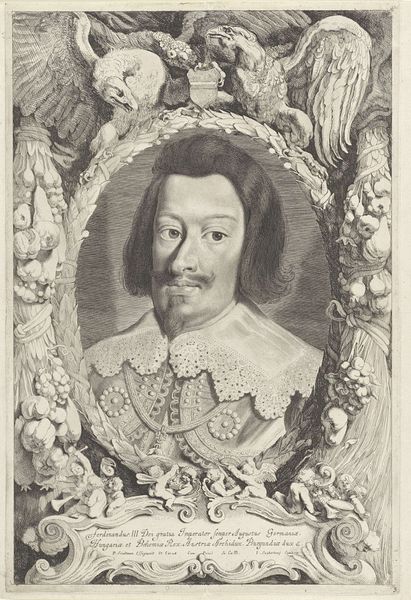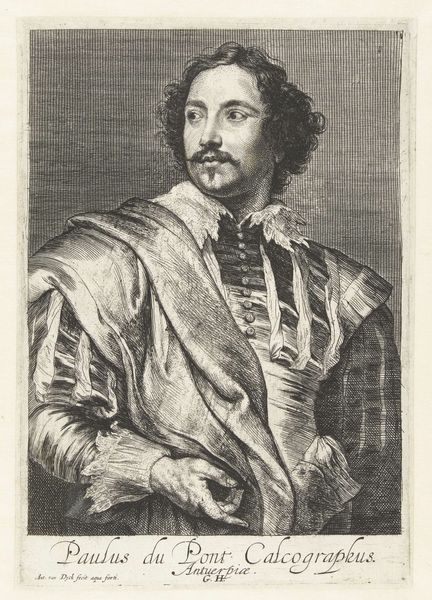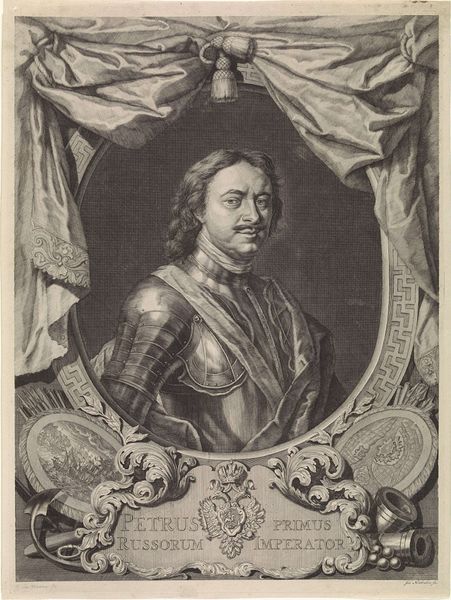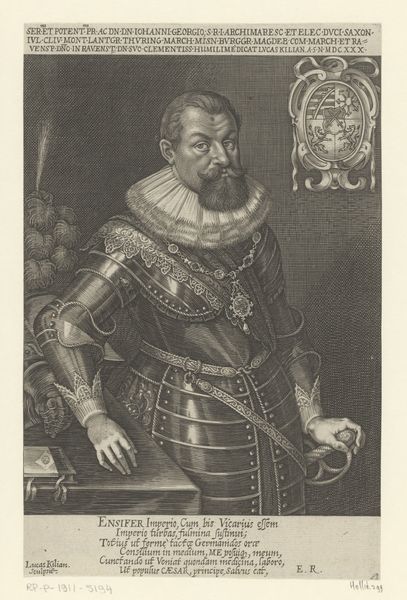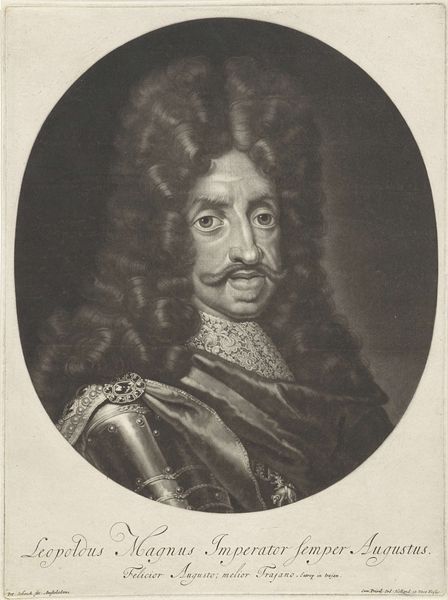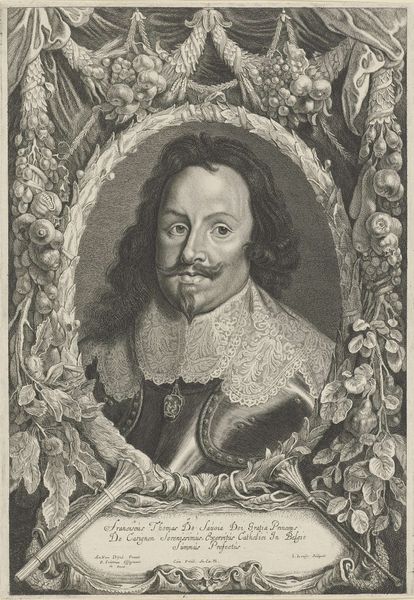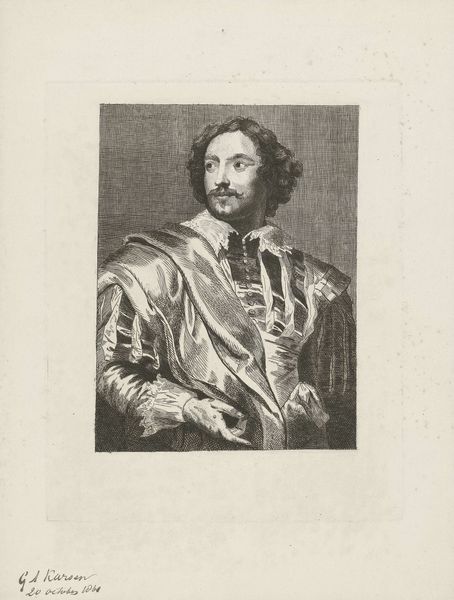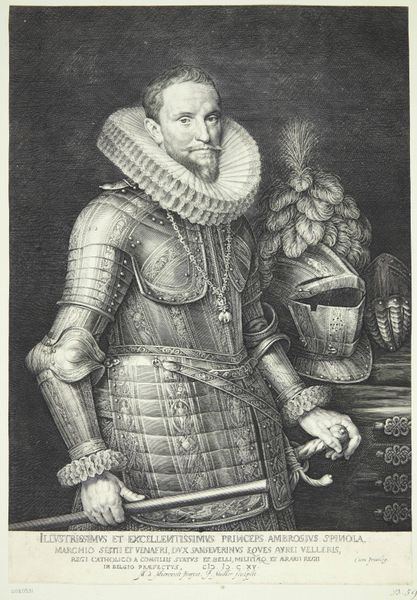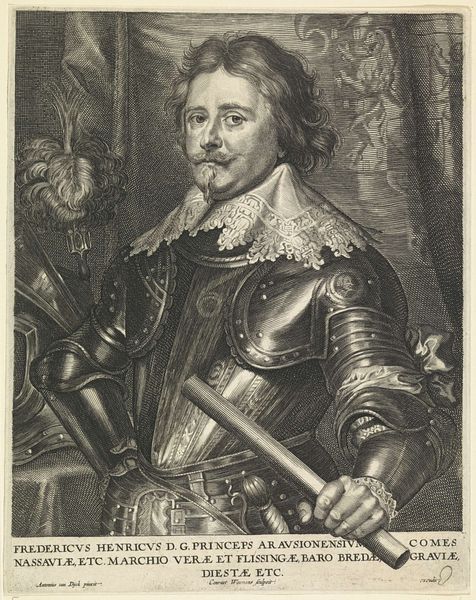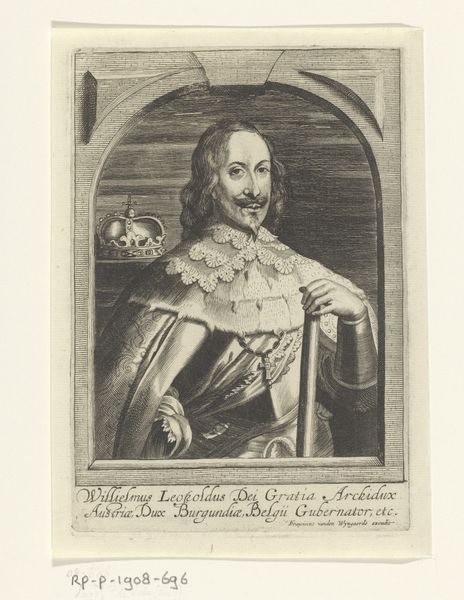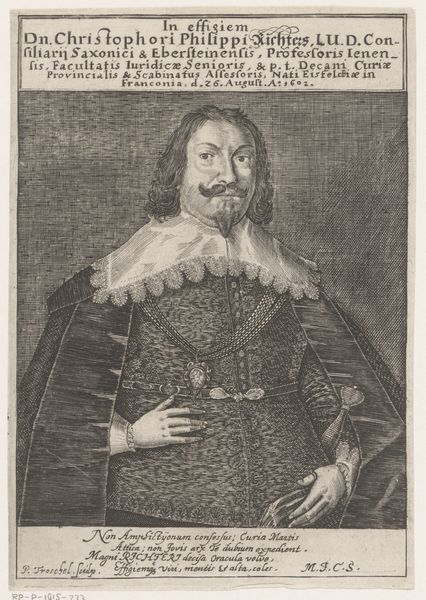
photography
#
portrait
#
photography
#
historical photography
#
19th century
Dimensions: height 212 mm, width 156 mm
Copyright: Rijks Museum: Open Domain
Curator: Let’s turn our attention to this remarkable portrait. It's titled "Portret van Frederik Hendrik, prins van Oranje" which translates to Portrait of Frederick Henry, Prince of Orange. Though created sometime between 1850 and 1930, this photograph speaks to the power of visual representation throughout history. Editor: The sepia tone immediately creates a feeling of distance, a sort of solemn reverence for a bygone era. His attire seems intentionally opulent, drawing the eye to details—the rigid lines of the armour in stark juxtaposition with the intricate delicacy of the lace. Curator: Absolutely, the work embodies the Dutch Golden Age and colonial dynamics tied to power structures that favored some, but disenfranchised many others through its presentation of aristocracy and military strength. We must examine the visual language that reinforces social stratification. Editor: It is interesting how, despite being captured through the relatively new medium of photography, it references established iconic traditions from the period. Think of the ruff collar; its circular design echoes the halo, signifying rank and distinction, as well as serving as protection. Curator: This use of symbols is deliberate, creating a continuity of authority. He embodies patriarchal structures, as he controlled the distribution of resources and privileges during his time. It represents inherited authority, one that has clear gendered and class implications. Editor: The gaze, directed towards the viewer, establishes a direct relationship between sitter and observer. The helmet beside him, adorned with plumage, also functions symbolically, evoking valor and lineage – and by extension the virtues associated with the House of Orange. Curator: What are we perpetuating by maintaining these displays? Does exhibiting such images further normalize these forms of structural violence through the implied prestige such imagery often generates? The piece prompts questions of the legacy we inherit and how we grapple with inherited structures. Editor: I would argue there's value in appreciating these visual languages. These historic symbols tell a story about collective memory and aspirational virtues as interpreted throughout various epochs. The layered meanings are ripe for discussion. Curator: I appreciate your perspective, I think that art's purpose evolves and by opening dialogue and critical engagement with these relics we create room for diverse audiences to create space for questioning how imagery can act as an extension of history’s uneven power dynamics. Editor: Indeed. In engaging, reflecting, and decoding these portraits, it reminds us that symbols continue to morph. We find and instill new and enduring relevance for the coming times.
Comments
No comments
Be the first to comment and join the conversation on the ultimate creative platform.
